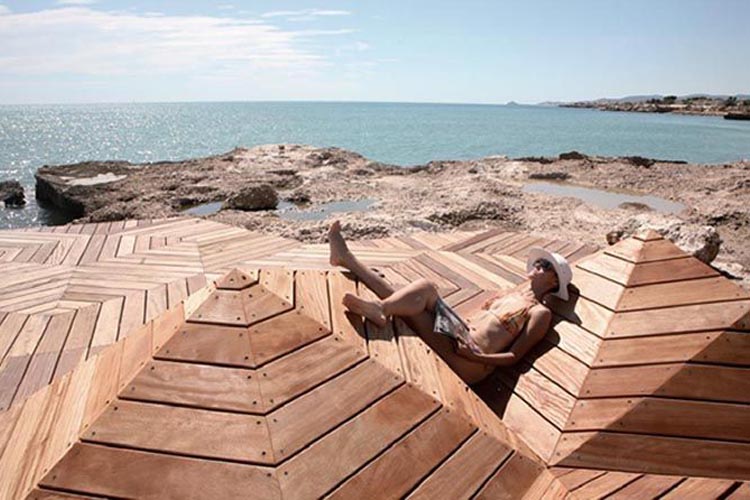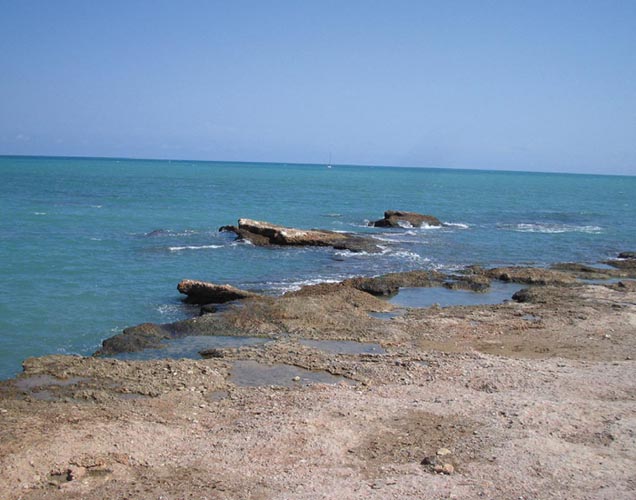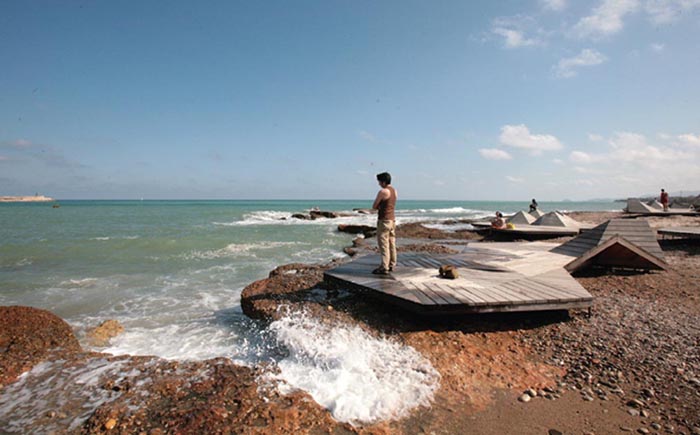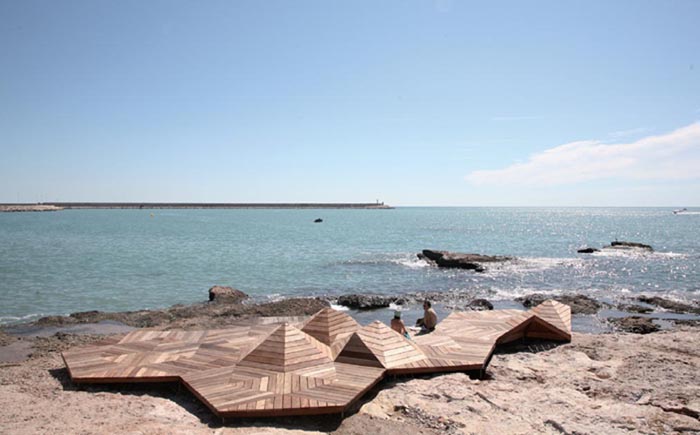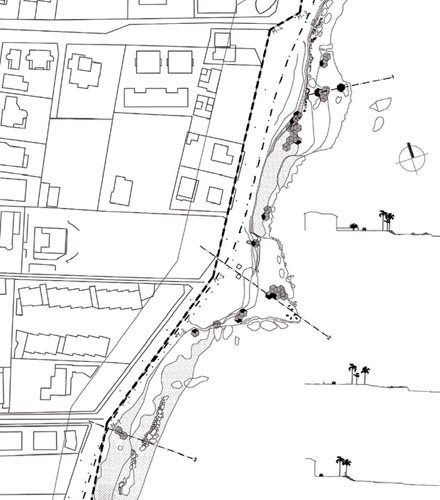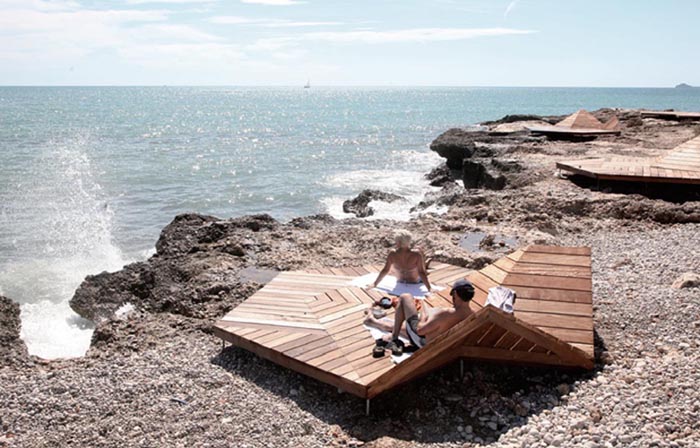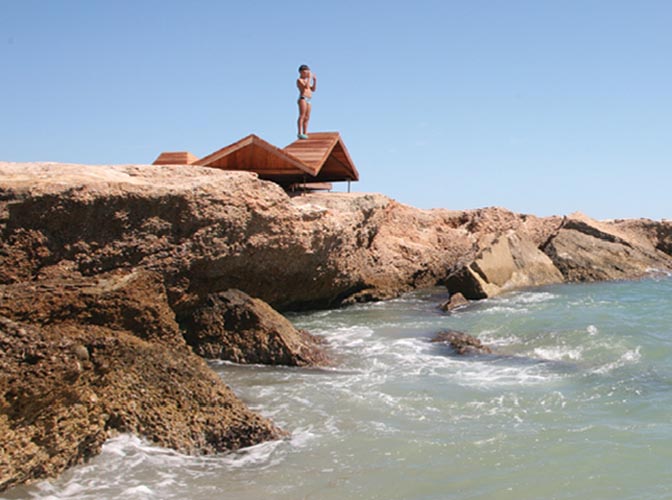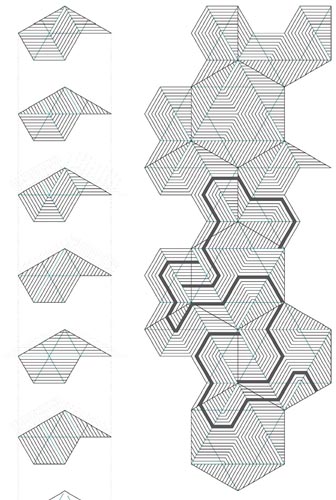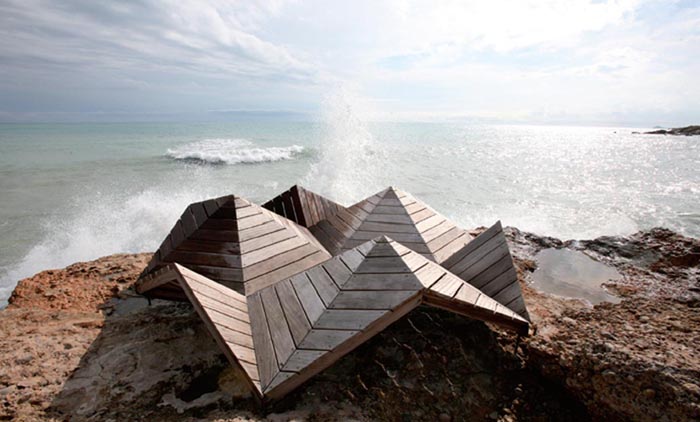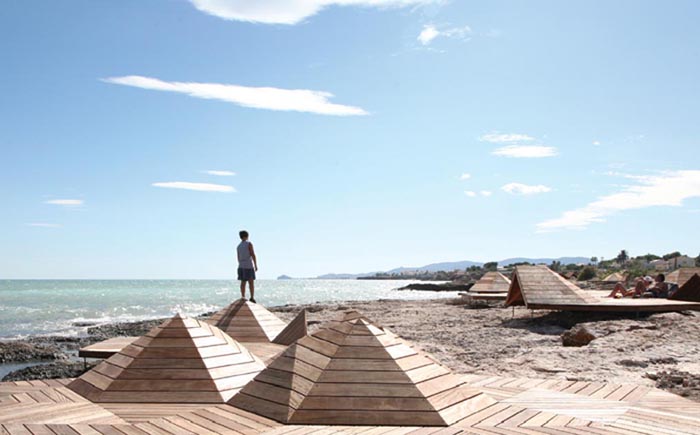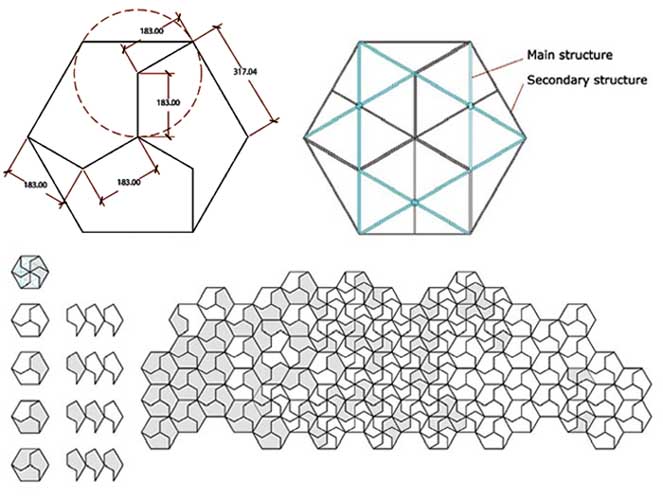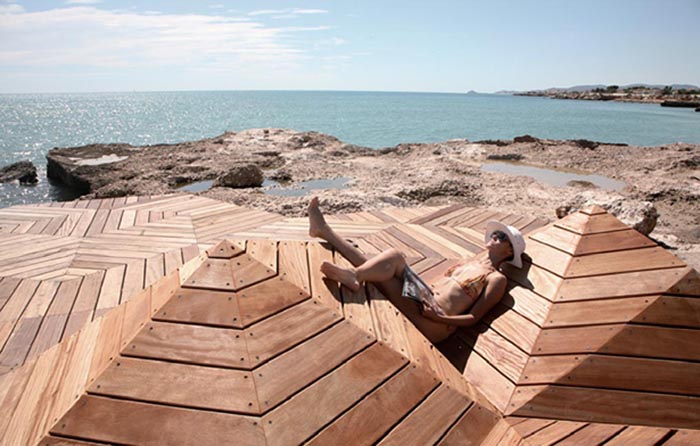Previous state
The town of Vinaròs lies halfway between the Peñiscola peninsula and the Ebro delta. Over recent decades its importance as a tourist destination has increased relative to competing neighbouring towns. This has given rise to expansion, to the north and south of the old town centre, of new suburban settlements consisting of small building blocks with isolated detached houses which are mainly only occupied in the summer season. With serious and still-unresolved infrastructural deficiencies, these areas of construction hectically clump together against the coastline. Along most of the seafront a simple asphalted two-lane road for vehicular traffic separates the frontline blocks from the beach. In some cases, however, the houses are right at the water’s edge.In contrast with the banality of this urban planning and despite the irreversible loss of its virginal state, the coastline has conserved a certain degree of natural beauty. The sea-caused erosion has given it a jagged profile alternating small coves and promontories formed by strata of conglomerate rock that easily disintegrates. While they offer magnificent views out to sea and across to the rocky outcrop of Peñiscola they are not very well known or frequented, perhaps because of the problems of access.
Aim of the intervention
The situation of the coast calls for urgent measures to mitigate or stop the erosion it is undergoing, both because of the natural effect of the sea and the increased pressure of construction. There is no doubt that the solutions will have to include working on large-scale strategies for putting the seafront in order, consolidating the public character of the promenade and beaches, with special attention to preserving its environmental qualities. In 2006, taking a small step in this direction, the Vinaròs town council promoted the installation, along a considerable length of coastline, of a series of modular objects called “Microcoasts”. The idea governing this initiative understood that preserving the rocky promontories of the coast also meant making them accessible.Description
The “Microcoasts” are modular platforms made of wood and set out over the rocks offering comfortable surfaces for playing, sunbathing or just lying down and enjoying the view. Some are horizontal, while others fold back on themselves to produce polyhedral surfaces of triangular faces. This pattern generates sequences of concave and convex forms that one can rest against in a great variety of postures. This volumetric complexity, however, contrasts with the geometric simplicity behind the concept of their construction.In fact, the platforms are conceived of on the basis of a systematic juxtaposition of only one basic module. The module is a polyhedron formed by a hexagonal pyramid that has lost two of its six faces while another four triangular planes have been added to it. The plan of the resulting figure presents quite an irregular perimeter that, nonetheless, creates a perfect hexagon when combined with two other modules. Hence, the repetition of the hexagonal unity formed by three basic modules put together makes it possible to extend the platforms like a cellular web across some sections of the rocky ground.
Assessment
The installation of the “Microcoasts” over the last untamed sections of the Vinaròs coastline has civilised them without urbanising them. It is clear that, with this operation, the population benefits from the possibility of being able to enjoy in comfort a space of relationship with the sea. The natural space has also benefited. Now accessible and comfortable, the previously ignored wild places have become specific and recognisable. They have thus entered the collective consciousness, which will help to protect them against future aggression in the form of urban development.While it is true that the price of achieving this security has involved a certain loss of freedom, the domestication of the coastline has been highly respectful and subtle. The “microcoasts” have the ephemeral, light appearance of fine sheeting that folds back to raise itself over the ground. Like wooden furniture, they are assembled with dry construction techniques in such a way that they can be removed without leaving any irreversible trace. In contrast with those of the concrete and asphalt of massive urbanisation, these qualities also represent respect for the natural setting, while also offering tactile and ergonomic comfort to their users. Again, and without contradicting these qualities, their tectonic appearance and the almost mineral geometry of their triangular polyhedral shapes have established formal kinship between the “Microcoasts” and the rocky ground that sustains them.
David Bravo Bordas, architect
[Last update: 02/05/2018]


